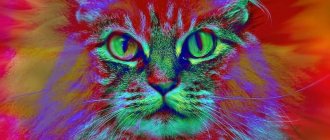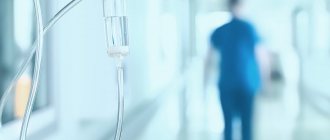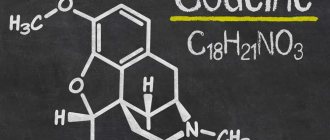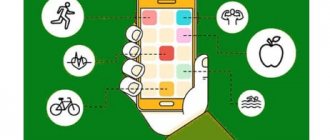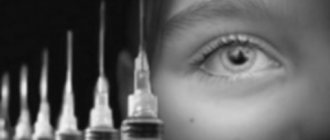What is hashish
Hashish is usually called a narcotic substance that is made from the hemp plant; it has a psychotropic effect on the human consciousness. Among addicts, the drug is often called puck. It is extremely difficult to calculate exactly whether a person uses hashish. However, it is worth considering that some behavioral changes will give away a drug addict. It is still unknown exactly on what basis the washer is made. But what is clear is that among the components of hashish there is hemp, pressed using a certain method. It is the resin of the plant that gives the psychoactive effect. “Briquettes” of the narcotic substance can be made of various sizes and weights.
What does the “puck” look like?
The so-called pucks are used to make buns and smoke them.
A piece of the drug in pressed form is called a puck. It usually has the shape of a rectangle, the size depends on the weight, and the color varies from green to marsh. Often the composition of a narcotic substance includes other harmful components; artisanal preparation conditions are often accompanied by changes in the recipe. During production, “craftsmen” add various impurities to the drug for the sake of great enrichment. The resin of the plant is the main binding element, the oily top of the hemp is used as the main mass.
Washers are divided into several types according to their appearance:
- Powdery
- Pressed
- Plastic
- Solid
Detoxification Methods
In case of an overdose of so-called “pure” hashish, the practice of ultra-fast detoxification, when the patient is administered an opiate antidote, has proven to be the most effective. This helps to remove the threat to the patient’s life in literally an hour. The problem is different - the drug market does not always sell truly “pure” hashish. Most often it is diluted with some other psychoactive substance, so to speak, to enhance it. In this case, other measures are used: drug and hardware detoxification.
When detoxifying with medications, the patient is given a drip, which includes cardioprotectors, hepatoprotectors, choleretic drugs, B vitamins, ascorbic and nicotinic acids. As a rule, the composition of the drip is formed on site individually, based on the doctor-narcologist’s assessment of the patient’s condition. Medical detoxification is mainly used to relieve acute conditions.
If hashish poisoning is not life-threatening and is more chronic, hardware detoxification methods can be used:
- Plasmapheresis. Blood purification using a special device that separates blood fractions (red blood cells, platelets and leukocytes) from plasma, in which all toxins are collected.
- Hemodialysis. Purification of blood by filtering substances present in it.
- Xenotherapy. Inhalation of an oxygen-xenon mixture, which has not only a detoxifying but also an analgesic effect.
- Hemosorption. Quick blood purification using a third-party sorbent substance.
Depending on the equipment of the medical institution, other hardware methods of cleansing the body may be used.
Danger of the drug
The main danger of hashish lies in its supposed harmlessness. Many people believe that you can always stop using drugs on your own, but they are deeply mistaken. In fact, one dose is always replaced by subsequent ones, the body is oversaturated with toxins, and the person will not be able to relax anymore without the next dose.
To begin with, the brain suffers from abuse; the prohibited substance negatively affects all its parts, which ultimately leads to:
- Memory impairment
- Decreased intellectual activity
- Impaired coordination of movements
Symptoms of the pathological condition
Changes occurring in the psyche are not immediately observed. The human personality degrades gradually, while exhibiting symptoms similar to schizophrenic disorder:
- Loss of interest in everything that once interested the person. Hobbies, friends, studies, favorite activities fade into the background and are soon completely forgotten.
- The expression of emotions is completely lost. The individual is not able to show participation, care, empathy, sadness and joy.
- Alienation towards everything develops. Friendly ties are severed; when talking, such a person answers in monosyllables and reluctantly, trying to quickly get away from any communication.
- The manifestation of facial expressions disappears, the voice becomes unemotional.
- There is a feverish shine in the eyes and paleness of the skin.
- The patient loses the skills inherent in a healthy person: personal hygiene, shame.
- Aggressive reactions towards close people and family members are often observed. Cruelty is also directed towards strangers.
- Compulsive disorder (obsession with movements) develops.
Effect
It often happens that after consuming one dose, a person does not experience any euphoric sensations, but experienced addicts will be happy to talk about the correct methods of smoking and how to take puffs. The narcotic effect will be achieved in full if a person is mentally attuned to it.
After smoking hashish, the addict first feels:
- mild dizziness
- carelessness
- heaviness in the legs
- Hand trembling
After inhaling for about 5 minutes, teenagers feel fear and anxiety, relaxation comes a little later and lightness appears throughout the body. The addict has a desire to move, he is filled with emotions, he wants to communicate. The teenager is lost in time and space, and the perception of colors and sounds is impaired. To a person under a dose, it seems that the world has become brighter. But there are those to whom, after taking a dose, everything around them seems blurry and dull. Under the influence of a narcotic substance, the addict sees his legs and arms as thick and elongated, and sounds begin to be heard muffled. However, in some people, on the contrary, in an intoxicated state, their hearing becomes sharper.
In addition, the assessment of distance is impaired; the drug addict sees that all objects are moving away from him. If you get behind the wheel while under the influence of hashish, you cannot avoid an accident, because the person will not be able to correctly calculate the distance and will crash into something.
It is worth noting that the above effects are not permanent. After each dose smoked, the perception disorder may be different, hallucinogenic visions are not excluded. Experiencing a feeling of euphoria, a person can go on an adventure; he is not able to really assess his abilities.
State of drug intoxication, physical signs:
- Redness of the eyes
- Decreased body temperature
- Sweat on forehead
- Cold skin
- Pale or vice versa red skin
- Dilated pupils
- Tremor of limbs
- Increased heart rate
- Rapid breathing
The effect of the dose can last up to several hours. At this time, the drug addict exhibits excessive talkativeness. In addition, under the influence of the dose, sexual desire increases.
Cup
This method may be a little awkward to set up at first, but it is very effective. Once you succeed, it will become a priority for you, I guarantee. Here's what you do: Take a sewing pin (or something shaped like it) and insert it through the cigarette.
Stick a piece of hashish into the top of the pin and place the cigarette in a clean glass so that the ends of the pin create a bridge. Light the hashish and cover the glass with paper, a book, or whatever you have available. As soon as you see the glass filling with smoke, inhale it. It's time for snack.
Overdose
In case of an overdose of hashish, pronounced disturbances of consciousness occur, and acute psychosis occurs. In addition, with this condition, nausea and vomiting and a painful cough are observed. An overdose can lead to death if help is not provided in a timely manner.
Signs of overdose:
- Dilated pupils that stop responding to light
- Dry mucous membranes
- Drowsiness
- Lack of response to external stimuli
- Chills and fever
- Pain in the heart area
If there are symptoms of an overdose, it is important to call a medical team; before the doctors arrive, it is necessary to provide the patient with first aid.
First aid rules
First of all, you need to call drug treatment help, without holding out hope that “everything will go away on its own” - it won’t. Classic measures - activated carbon and drinking more - will help little in this case, although they will not be superfluous either. The patient needs to ensure airway patency and constantly monitor the heartbeat, since the main cause of death in case of hashish overdose is myocardial infarction.
If the heartbeat stops or breathing stops, appropriate resuscitation measures must be performed: chest compressions and artificial respiration.
Side effects
Like many drugs, hashish causes a number of side effects.
At the initial stage of use, the following negative consequences are likely:
- Bronchitis
- Tachycardia
- Heart attack
- Drowsiness
- Depressive states
- Panic
- Respiratory problems
- Difficulty perceiving information
Next, new negative manifestations develop:
- Brain diseases
- Oncology
- Testosterone in men begins to be produced in smaller quantities
- Impotence
- Decreased immunity
- Persistent respiratory diseases
If the drug is taken by a young teenager, growth problems may occur.
Symptoms of hashish addiction
There are 4 phases of hashish intoxication. In the first phase, a person may feel anxious.
Increased sensitivity to external stimuli. There is a suppressed desire to jump, run or dance.
Warmth spreads throughout the body, legs become heavy. After 5-10 minutes, the second phase begins, accompanied by disturbances in perception, consciousness and thinking.
Colors become very bright, objects become extremely clear or, on the contrary, blurry. The perception of time is disrupted - it seems that it can speed up or slow down.
Due to disinhibition, semi-sexual topics “pop up” in smokers’ conversations. The patient's thinking becomes increasingly superficial, unstable and disorganized.
Carelessness and ease of decision-making are replaced by fragmentary and inconsistent thoughts. The patient does not perceive a holistic picture of the real world, but individual random events.
Thinking disorders are accompanied by motor coordination disorders, increased tendon reflexes, tachycardia and increased blood pressure. Horizontal installation nystagmus is detected.
Stages of addiction
Once, seeing a person suffering from hashishism, it is easy to understand. how dangerous the substance is for the body. Pathological attraction to hashish develops slowly and therefore unnoticeably.
Dependence on a prohibited substance develops in stages:
- Psychological discomfort. Nothing can bring pleasure to a drug addict except a new dose. Without its use, he experiences constant mood swings and anxiety
- The amount of drug consumed increases every time. Cannabis is smoked alone, not just with friends.
- The emergence of physical dependence. If the dose is not consumed in a timely manner, a bad mood, even suicidal thoughts, may occur. At this stage, cannabis is no longer enjoyable, hashish is smoked just to make life seem normal
- transition to other stronger drugs. After a person stops getting pleasure from hashish, he may begin to take other types of serious psychoactive substances that have a more negative impact on health. Hard drug overdose is often fatal
- At the next stage, personality degradation occurs. A drug addict is ready to do a lot to get a dose; at this stage he often commits criminal acts
Bottle
All you need is a plastic bottle. Basically, you work with the same concept as to create a bottle bong for smoking marijuana. To create this highly effective device, cut a small hole at the bottom of the bottle so that a cigarette can fit into it.
Attach a small piece of hashish to the end of a smoking cigarette and insert it into the bottle through the hole. Let the bottle fill with smoke (make sure the cap is on so the delicious smoke doesn't escape). This is how they smoke on the east coast of Canada, in Paris, in Asia, and I can assure you that it works.
Signs of use
The exact signs characterizing hashishism have not been identified, but certain behavioral changes indicate the presence of addiction:
- Overexcitement
- Rave
- Hallucinations
- Constant mood swings
- Aggressiveness
- Persecution mania
In the second stage of addiction, when quitting the drug, painful withdrawal symptoms are observed. The speed of development of pathological cravings depends on the dose size and frequency of use.
Withdrawal symptoms:
- High pressure
- Trembling all over the body
- Convulsive manifestations
- Rapid pulse
The above signs will allow you to find out whether your loved one uses hashish. If you suspect addiction, you should rush to a drug treatment clinic or invite a doctor to your home. After examining the patient and conducting diagnostics, the narcologist can prescribe an individual course of treatment.
Appearance
There are several different forms of the finished product. So hashish can vary not only in its consistency, but also in the shape of the “briquette”. The consistency of the finished product depends on the quality of the raw materials used. Hashish can be hard, soft or crumbly. The raw materials used also affect the color of the product. There are many color options, ranging from gray to black.
Hemp plantations are located in the Middle East. It is from Asia that this product is distributed throughout the world. The culture of use and traditions associated with the use of hashish also spread from these countries. In many countries, its use is associated not only with traditions, but also with certain historically established laws.
Consequences of use at different stages
A timely visit to a drug treatment clinic will increase the chances of full recovery of health. Drug use negatively affects the following systems:
- Brain
- The cardiovascular system
- Reproductive system
- Reproductive system
- Lungs and respiratory organs
Damage to the body at every stage of addiction
- At the initial stage of addiction, physical dependence does not occur, but the body is poisoned by poisons. This causes health problems, which include bronchitis, disorders of the heart and respiratory system, and other pathologies.
- If a drug addict does not seek help in a timely manner, health continues to deteriorate, reduced immunity will cause constant colds, serious pathologies, including cancer.
- In the final stages, schizophrenia and lung cancer are often diagnosed
Hashish has a negative effect on growth hormone, and therefore the growth of a minor drug addict may be stunted.
Specifics of analyzes
In situations where it is necessary to obtain the necessary data within a short period of time, saliva is taken for analysis. But using this technique is not always suitable. To more accurately detect the content of toxins and their concentration, a urine test is used. In addition, blood is collected to determine how long the drug has been used.
The most effective of all types of analyzes is the study of hair follicles. This test can detect drug use after six months.
Who is at risk
The risk group often includes young people and girls who want to experience new sensations and crave hallucinations. In addition, it has been proven that the desire to use drugs appears in people who are unable to enjoy ordinary things. People of different age groups can start using hashish, but schoolchildren and students and weak-willed people are more at risk.
Often drug addicts do not admit that they are sick; the task of loved ones is to convince them to see a doctor.
Is it possible to quit on your own?
Unfortunately, in a world where there is access to the substance, it is impossible to stop using it on your own. Here are a number of reasons:
- Availability;
- Associative thinking;
- Obsessive desire to use;
- Willingness to get the dose by any means;
- Traction;
- The illusion that there is no problem
As a rule, weed smokers do not consider themselves drug addicts. They are in denial until the very end and do not feel the need for treatment. Trying to quit on your own produces short-term results. However, returning to use after abstinence is fraught with stronger doses and switching to other drugs.
Another interesting info
One of the metabolites of paracetamol, one of those substances that appears after you eat it, is AM404, which is a weak agonist of cannabinoid receptors, which may also have an analgesic effect. Remember this when you lower the temperature! You slightly activate cannabinoids, which means you are drug addicts!))) (12)
Linoleic acid
Another popular supplement. Contained in many foods. In sunflower oil, generally consider it 2/3. It can increase endocannabinoids. But here we have more of a supporting function. That is, drinking sunflower oil will not have any effects (13, 14), but the content of cannabinoids will still be higher than with irregular use. Also pay attention to Conjugated Linoleic Acid (CLA), it is supposedly more advanced and has a more targeted effect on the body.
Omega-3 and Omega-6
They also act as a providing material for the synthesis of endocannabinoids (15). There are a lot of them in red fish or, more economically, in herring. So proper nutrition, even at the level of producing more substances, helps you feel better, the desire to take something forbidden is less, because you have everything at maximum.
Cold shower
Exposure to cold temperatures increases cannabinoids (16, 17). For the most ardent fans! Take a cold shower and your CB1 and CB2 receptors will greedily take up circulating neurotransmitters.
Hormones
Testosterone, dihydrotestosterone (18) and estradiol (19) increase the number of cannabinoid receptors. By increasing these hormones, your cannabinoid system will become more pumped.
Physical exercise
Training at a moderate-heavy load, when the heart rate is kept at 70% of the maximum, increases anandamide, which activates both receptors (20)! The last 2 points can be perceived as a reference to a healthy lifestyle. That if all body systems are functioning well, you may not want to smoke or drink at all. Something to think about!
- slow down the breakdown in the body like nutmeg
– increase the sensitivity of receptors like EGCG
- increase synthesis with linoleic acid or omega-6, proper nutrition
- mimicking, similar substances in the mechanism of influence, but not related to cannabinoids, such as memantine or oleamide. Probably, of the entire list, these substances are closest in effects to marijuana.
In this story, we wanted to perform a certain social function, to offer a comprehensive view of cannabinoids, that you don’t have to smoke something to get the effect of increasing them. Moreover, there are also healthy, useful ways like training.
Write your experience, maybe you have already tried some schemes. Well, I hope you liked the episode and the information is useful! Good luck and see you soon!
Treatment
In the initial stages, it is enough to undergo an outpatient course of psychotherapy. Advanced forms require inpatient therapy.
Helps to get rid of hashish addiction:
- Detoxification.
- Drug support with nootropics, hepatoprotectors, cardiac drugs, vitamins, antioxidants, psychotropic drugs.
- Psychotherapy. This type of treatment is the main focus. The influence of psychotherapeutic techniques involves the active motivation of clients.
- Coding.
Can marijuana make mania worse?
The psychoses that arise from the use of cannabis in various forms are best studied. A large dose of cannabis (or a small one, but with a high THC content) can cause acute psychosis - a mental disorder in which a person loses touch with reality and the ability to behave adequately; he can see hallucinations, hear voices, and express delusional ideas.
There are fewer studies on the link between marijuana and bipolar disorder, and the authors call their findings preliminary. But several recent studies have demonstrated that cannabis use in adolescence is a risk factor for the development of bipolar disorder (BD) in later life.
A team from Warwick Medical School found that teenagers who used cannabis at least 2-3 times a week were later more likely to show symptoms of hypomania (a mild form of mania), a manifestation of bipolar disorder.
Smokers with bipolar disorder, as well as with schizophrenia, often justify themselves by saying that grass helps them cope with the most severe symptoms: anxiety, depression. But scientists did not take their word for it and found that patients usually use grass not when they feel bad, but when their mood is already high, in order to increase euphoria. This is precisely what is fraught with an attack of mania.
When talking about marijuana and the psyche, we cannot ignore the opposite point of view: that the herb can heal.

